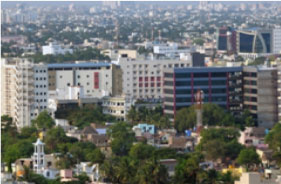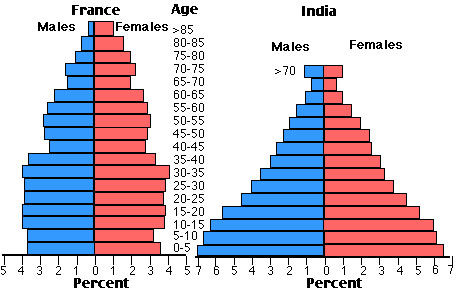
Source: Populated, Arvind Balaraman, FreeDigitalPhotos.net

Source: Populated, Arvind Balaraman, FreeDigitalPhotos.net
Governments and agencies can use the population pyramid as a planning tool for future spending. A population pyramid allows geographers to look at how events in society, like wars or famine, affect the population of a specific country or region. By studying population pyramids, governments and agencies can determine the social and economic needs of a country or region.
The factors below can be used to determine these needs for a country or region:
This is the number of live births per thousand births. The world average birthrate is 22 babies per thousand people.
Average number of children a woman of childbearing years would have in her lifetime (if she had children at the current rate for her country). The world average fertility rate is around 3.0.
This is also called the death rate, is the number of deaths per thousand people. A society is considered healthy if the mortality rate is low.
To find the rate at which a population is growing, you would subtract the mortality rate from the birthrate. The difference is the rate of natural increase.
The number of deaths among infants under age one per thousand live births.

Source: population files, University of Nebraska, Department of Geography/Geology
Question to consider: What services will these countries need as the population ages? Interactive popup. Assistance may be required.
France has a steady population which indicates that there is good family planning and good healthcare; government services should continue to focus on good healthcare services.